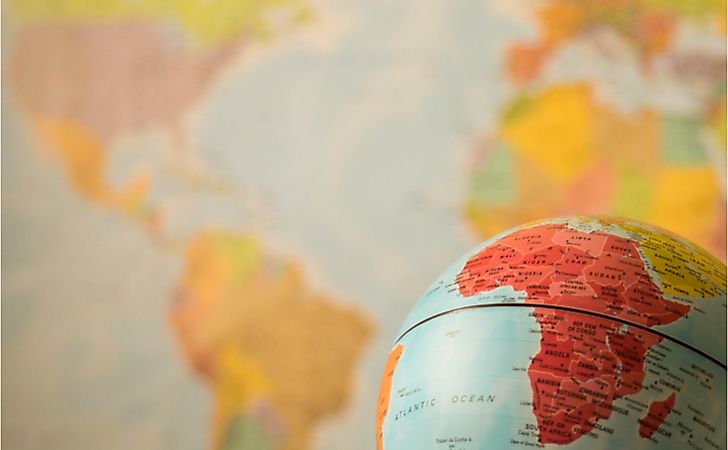How Big Is Africa?

Africa is the second-largest continent in the world right behind Asia. Africa is almost twice the size of Russia and bigger than China, the United States, and Canada combined. At approximately 11.7 million miles (including the adjacent islands), Africa occupies 20% of the world's land area and 6% of its surface area. It is surrounded by the Red Sea, Atlantic and Indian Oceans, Isthmus of Suez, and the Mediterranean Sea. Africa has 54 independent nations, 2 de facto sovereign states, and 9 territories. A considerable percentage of the continent is situated in the Northern Hemisphere.
Africa is connected to Asia by the 81miles wide Isthmus of Suez. The Sinai is usually considered to be part of Africa for geopolitical purposes. The distance between the northernmost point of Africa (Ras ben Sakka) and the southernmost point (Cape Agulhas) is about 5,000 miles. The distance from the easternmost place in the continent (Ras Hafun) and the westernmost point is approximately 4,600miles. Its biggest lake is Lake Victoria while its tallest mountain is Mt Kilimanjaro followed by Mt Kenya. The smallest African country is Seychelles, while the biggest is Algeria. The Gambia is the smallest nation on the continental mainland.
The Demographics Of Africa
Africa is the second most populous continent on the planet with a population of about 1.225 billion people right behind Asia. The average population of Africa is the youngest of all the continents, and in various nations, over 50% of the population is below the age of 25 years. The population of Africa has increased rapidly over the last 4 decades. The population of Africa grew from 1950 (229million) to 1990 (630million). The continent’s population exceeded 1.2billion in 2016. Africa’s population is expected to exceed the population of India and China by 2022. The population of Africa exceeded the Americas in 2000 while it surpassed Europe during the 1990s. Nigeria is the most populous African country, followed by Ethiopia and Egypt. The least populated nation in the continent is Seychelles.
The Bantu-speaking people are the majority in the southeast, central, and southern Africa. There are numerous Nilotic people in East Africa and Sudan, few native Pygmy and Khoisan people in central and southern Africa and some Swahili communities on the Swahili coasts. The inhabitants of West Africa are mainly Niger-Congo language speakers. The most influential and largest Niger-Congo language speakers in West Africa include Wolof, Yoruba, Akan, Fulani, and Igbo ethnic groups. Some of the Nilo-Saharan groups that are living near the boundary between Central and West Africa include Zarma, Kanuri, and Songhai. Some of the Eritrean and Ethiopian groups residing in the Horn-of-Africa like the Tigrayans and Amhara speak Afro-Asiatic language.
The Economy Of Africa
Even though Africa is rich in natural resources, it remains the least developed and poorest continent in the world. Some of the leading causes of the poor economy in the continent include military and tribal conflicts, high illiteracy levels, poor central planning, and corrupt government, among others. Its GDP is still lower than that of the UK, Germany, Japan, China, and the United States. The last 24 states in the UN’s Human Development Report of 2013 were all from Africa. According to the World Bank, over 81% of the people living in Sub-Sharan Africa were surviving on less than $2.5 daily in 2005.











